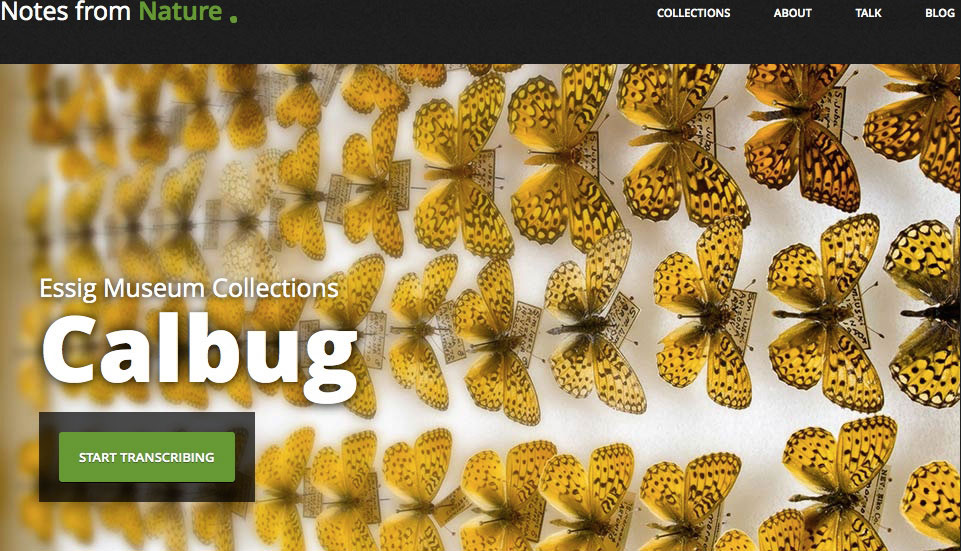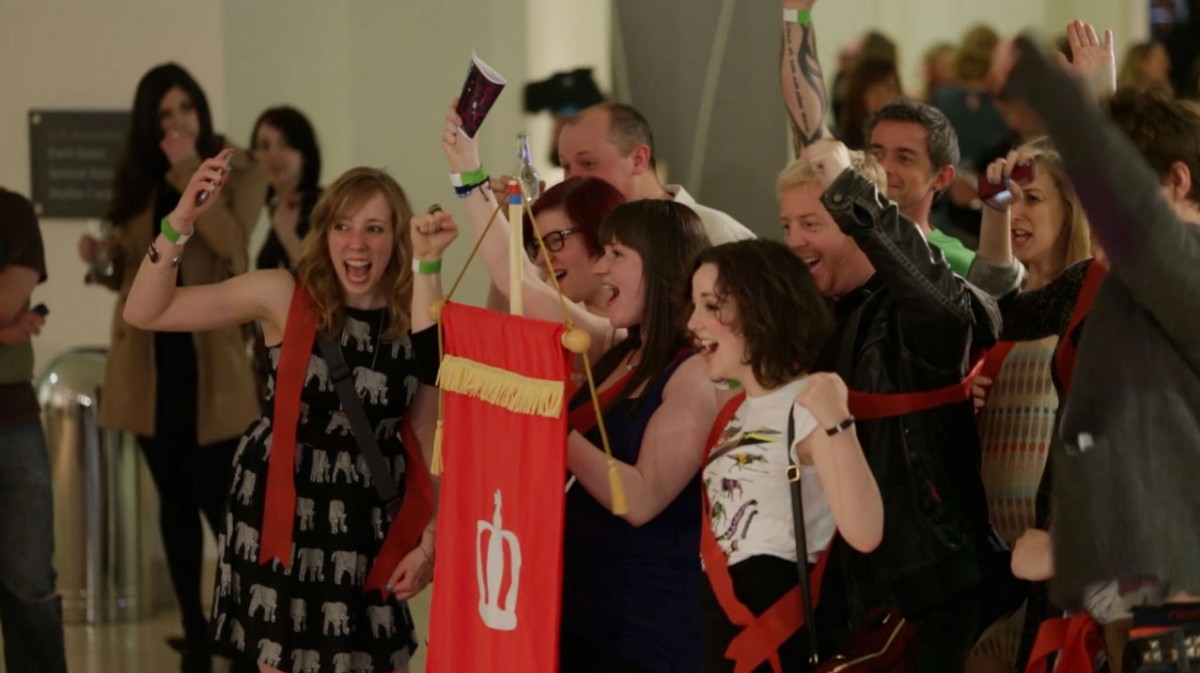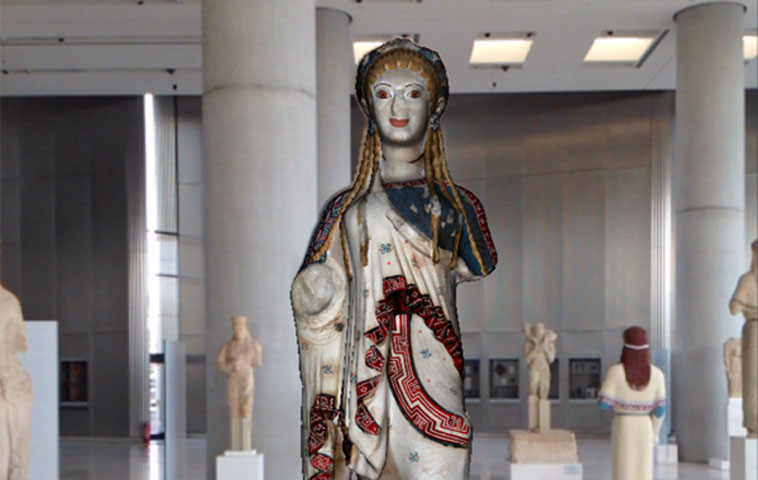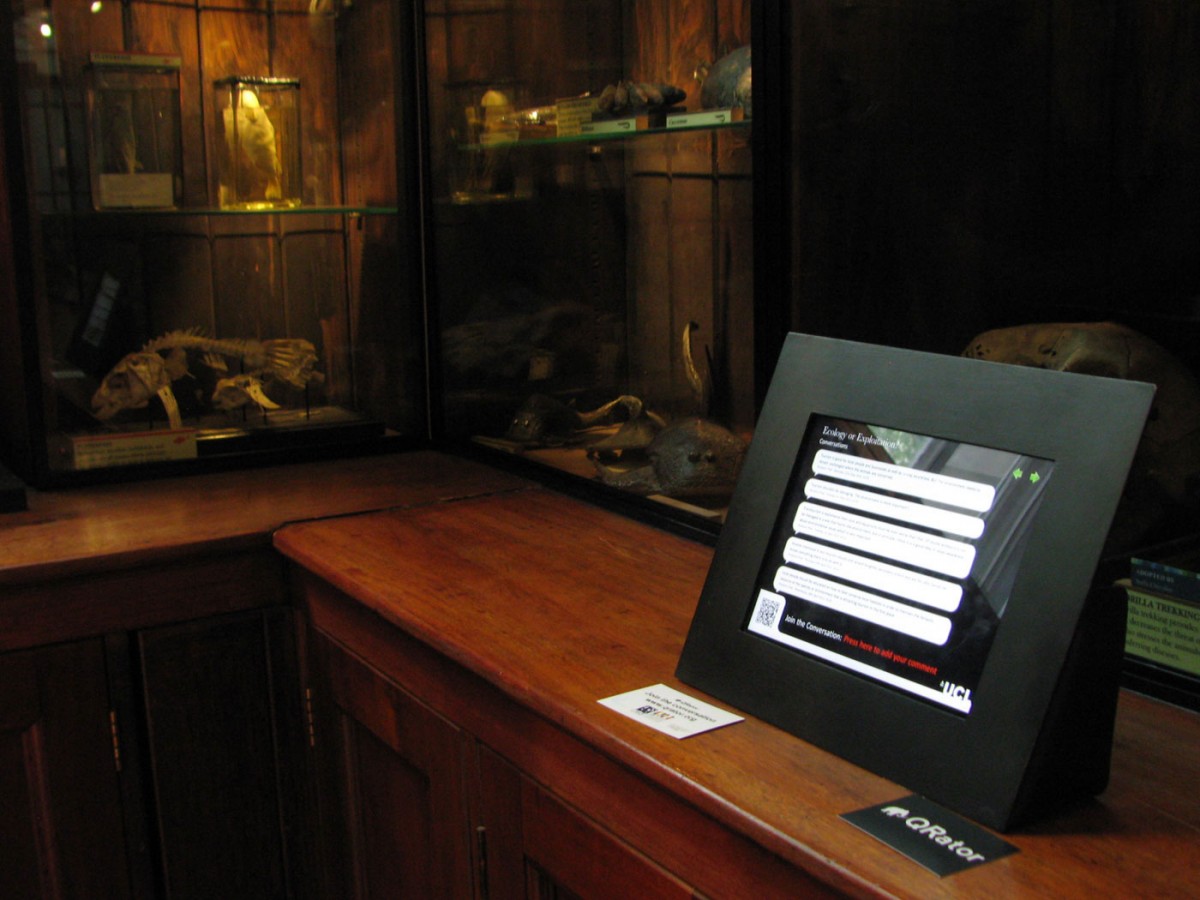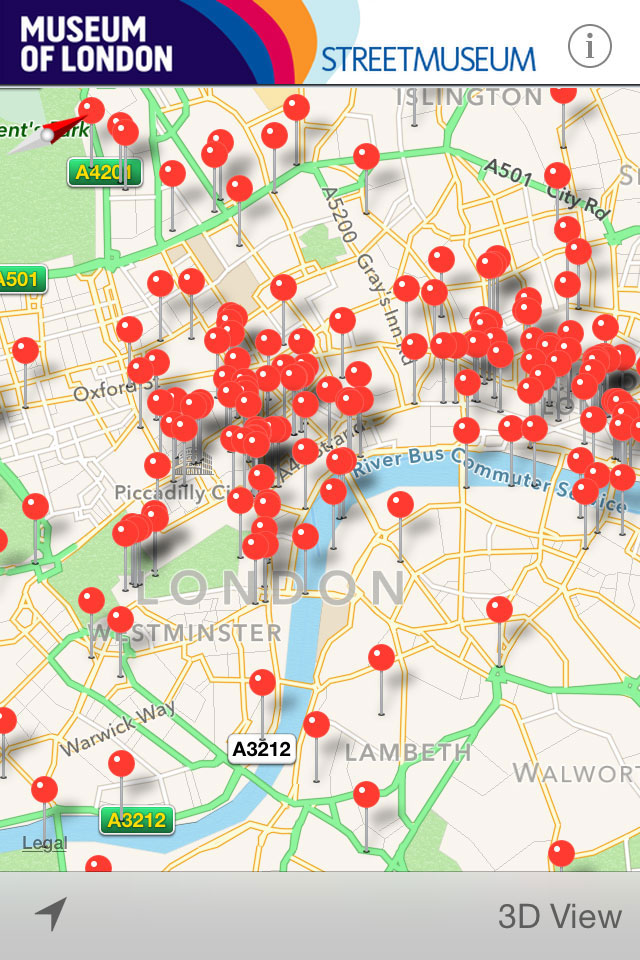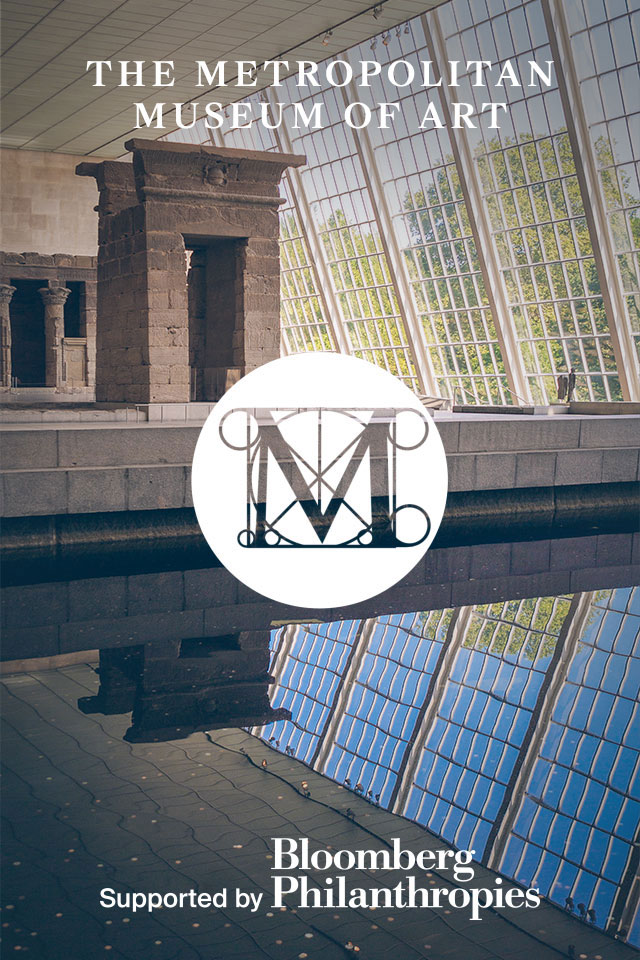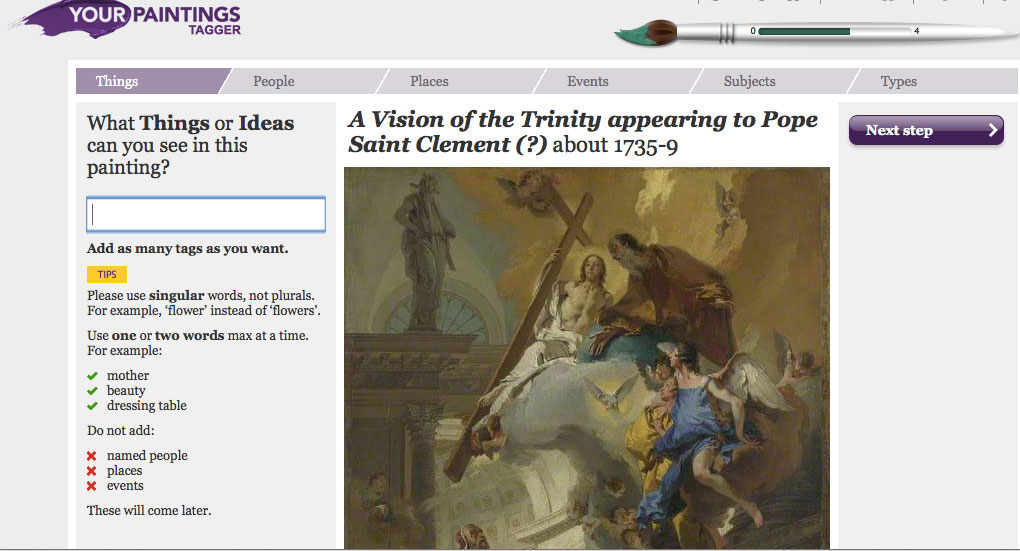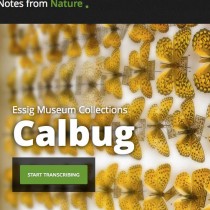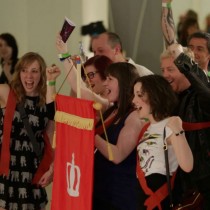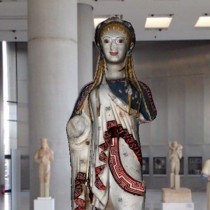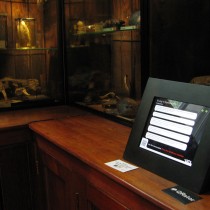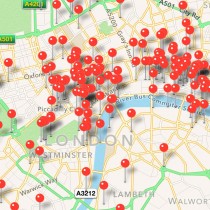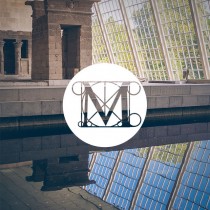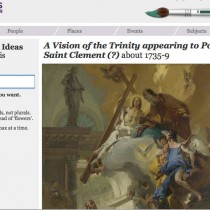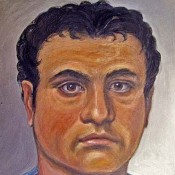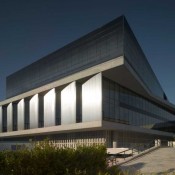This paper attempts to examine how debate and practices are shaped today round the usefulness, use, impact and challenges of digital information and communication technologies in museums. By referring to relevant museological approaches and application examples, the text will raise the question as to what degree digital technologies are integrated today in both the museology and museography of a museum. It will support that such an integration requires and seeks the opening up of museums not only to the use of different technologies, but also to ideas and proposals whose applications are used to organize and produce knowledge and communication. This argument will be completed with the suggestion that applications and adaptations of old, new and emerging technologies in museums form a (new) museology of technology.
A Post-Digital or In-Digital Museum?
In 2002, Julian Spalding presents in his book The Poetic Museum: Reviving Historic Collections, according to his own claim, “his global vision of the future of museums” (note 1). In the book’s epilogue, Spalding invites us to envisage what the British Museum (BM) will be like in 2012, namely 10 years on from the time of his writing and two years prior to the date of this paper. In this exercise in futuristic museology, Spalding starts with the hypothetical story about a group of friends visiting the BM. These are Jill, a 30 year old computer programmer, Jake, her 16-year old nephew, Sophie, her 9 year-old niece and David, Jill’s father and uncle of the children. The group is encouraged by a museum employee to “supply themselves with headsets if they wish (note 2) because, as he explains, the whole museum is connected audially and almost in all languages [through the headset]” (Spalding 2002, p. 157) although as noted, visitors can also browse without the headsets. Visitors can select audiovisual tours for different age groups through them and are informed that “once you understand how to use the headset […], it will do most of the work guiding them in whatever they want to see” (Spalding 2002, p. 158). Visitors can talk or signal to choices presented to them so as to register their interests and to activate a particular content in the relevant portable equipment.
In this scenario, therefore, the headset plays the role of a guide or assistant to the visit, who accompanies the visitor from one hall to another, giving information on exhibits and objects, through text, audiovisual material and three-dimensional projections. It also advises the visitor on what to see, asks him if he wants to hear music during the tour, gives access to the museum database, enables the visitor to communicate with the group he came to the museum with and alerts him when the time comes to meet up with it, the group, again (note 3).
In the above scenario one can locate individual applications and museum practices in the various museums of today, even though I am not aware of a specific museum using such a headset (note 4). Of course, such futuristic scenarios tell us more about the conventions and contexts of the era they are written in rather than about the period they are describing (note 5). Nevertheless, what is particularly interesting in Spalding’s scenario is the description of a generally anthropocentric technological application, in harmony to a degree with both the needs of a visit and the rest of the museum’s interpretative and communicative practices. Besides, the specific technology is presented as “smartly” linked with the rest of museum technologies e.g with the museum’s “database” (note 6). In other words, digital technology is presented as part of the museum’s museological and museographic design, in an almost “post-digital” phase, where museum technology is integrated (although not necessarily predominant) in its activities and “life”.
Nick Poole, Chief Executive of the UK Collections Trust (note 7), describes in his blog, not very differently, the relationship between museums and digital technology (note 8):
“But, whisper it, aren’t we all just, really, kind of, a little bit over Digital? Not in the sense that it doesn’t matter, of course it matters in a profound and fundamental way. But in the sense that the first wave of infatuation is over, and we’re starting to think about the post-Digital sector and what it means to be a truly hybrid service industry. An industry in which the digitality and physicality of different parts of our stuff, and different channels for delivering our services, are simply background facts of life for museums, archives and libraries.”
The view that the use and partly the integration of old and new digital technologies in museum functions are given facts (as assumed by Spalding in 2002 and implied by Poole in 2010) constitutes to a great degree for most museums around the world a generalization that can hardly be argued qualitatively or quantitatively. More importantly such a generalization implies an appearance and interpretation of “digitality” that is static and determined in time. Can we, in fact, talk about a “post-digital” branch of museums when new and even newer technologies appear so quickly and so often that one has the impression that every day we have a new technological application, a potential candidate for its inclusion in the museum? Or when the understanding of their use, usefulness and possibility of their being included in museums is in progress? Or when the why and how they influence both the museum’s professional practices and the public’s experience of the museum is actually at a hybrid stage? Despite museums adopting many “new technologies”, these do not necessarily lead to new or different approaches to old, though always important, museological questions (e.g. interpretation of objects, presentation of information, representation of a social, geographical, temporal etc. context, communication with the public) (note 9).There are, however, applications and adaptations of technology that offer the possibility of redefining and renegotiating not only professional practices, but the actual concept of the museum (some examples are listed below).
To put it differently, “digitality” and how, why, by whom, for what purpose and with what results it is realized in a museum, and potentially transforms the latter, was, is and probably will continue to be in a state of flux. And despite agreeing with the proposal that a museum is a hybrid of material and digital exhibits, in my opinion, this assumption does not exempt us from the need for continued examination of what is “material” and what is “digital.” The hybridity of the museum is not simply the juxtaposition of material and digital, or even interactive integration of hardware with digital, but marks a continued development of the museum’s concept and practice through mutations developed or attempted by “digitality” and physicality, in particular when one penetrates the other.
Today for example, we have technological applications in museums where the digitality and physicality of objects, space and experience do not just meet, but the one has a qualitative effect on the other. Technology applications such as 3D printing, Virtual, Augmented and Mixed Reality, or Big Data, Open Data and Linked Data, give us the opportunity to ask fundamental questions about the physicality of derivatives of digital technologies and the digitality of physical objects (note 10).
Here are the following indicative, relevant projects, where digital technologies potentially modify and are modified by space, physical objects, the concept and the space-time of the visit, as well as the scope and the producing of an interpretative “content”: Calbug (a crowdsourcing project], where the public is invited to help transfer data contained in photographs, signs and books from the collections of arthropods at the Essig Museum) (note 11); Capture The Museum (where rival groups of visitors use a mobile phone application to answer questions and solve puzzles on objects, within an experiential game in the National Museums of Scotland) (note 12); CHESS project (applications based on personalized digital storytelling, interactive content and augmented reality) (note 13); Qrator Project (considering the relationship and the effect of using mobile phones and other digital technologies in the construction of new models of public participation, interpretation and storytelling in the museum) (note 14) and Streetmuseum (a mobile phone application that uses the Global GPS System to present the user with old pictures and photographs, from the collections of the Museum of London, of the streets of the city toured by the user) (note 15) .
The above examples emphasize that there is a constant remoulding of technologies that give us the opportunity to think both differently or subversively on the production and organization of knowledge in the museum, the presentation and communication of this knowledge, where, when and what a museum object looks like as well as the concept of a museum visit and experience. To paraphrase Negroponte (1995, p. 231), “each generation will become more digital than the preceding one” (note 16). This means that digitality is becoming more and more (in some museums faster than others) part of the actual concept of the museum and has the ability to modify the meaning and tangibility of its physicality (e.g. of the building and its objects). Therefore, the museum is not and possibly may not ever become “post-digital”, but is in a constant and fluctuating “in-digital” mode.
One of the problems then of fully accepting the view that we are in or we are moving towards a “post-digital” era in museums is that the “digital” is not easy or even possible to be located in one moment or period of time, or to one technology or device or manner of their use but neither necessarily to specific theoretical and methodological tools of analysis of the concept and practice of a digital museum. In this context, the question perhaps is not simply whether we are already in or moving towards a “post-digital” form of museum, but also towards a “post-physical” one. So when one is forced to use proposals that contain more than one “meta-”to describe changes in the definition of a museum its content and activities, then perhaps this means that we need different terms and concepts in our museological vocabulary.
Integration of Digital Technologies in the Museum
Let’s go back a step, however, from the impending “insubstantiality” of the museum where the previous argument threatens to lead us. Whether we accept the “post-digital” or the “in-digital” museum, or even if we reject both these approaches, a perhaps more real and tangible issue is whether the digital technologies of a museum are actually integrated in its museology and museography (note 17). As I mentioned earlier, both in Spalding’s “vision” and Poole’s “whispering”, the physical and the digital are already presented as parts of “the museum whole”, in cooperation, communication and attunement. Anyhow, I did previously express my own scepticism as to accepting whether this has already been achieved.
A key question that arises is just how much such an integration is, to begin with, possible in the context of a museum’s usual organizational structure. Let us leave aside, for the moment, cutting-edge technologies that find their way to the museum (let’s say, augmented reality technologies and digital data processing and imaging platforms) which apart from the challenges that they present when “translated” into museology and museography, also require a greater familiarity with their technical and determining characteristics and that an understanding of how they define “space”, “objects”, “visitors”, “information” etc. On the contrary let us refer to technologies such as the world wide web and social media, applications that have been presented as “democratized” due to the continal simplification of their technical features, their familiar appearance and popularity. Surely aren’t over 20 years of the web and 10 years of social media (note 18), more than enough time for at least the largest and more active museums to succeed in integrating these means of information and communication in their organizing structure and professional practice? Especially when both sites and social media are now part of the everyday life of billions of people around the world (note 19).
Indeed, nobody can deny that mainly websites, but increasingly, social media, are widely used by many museums around the world, to such a degree that a few years ago a member of the UK Museums Union declared that “a museum nowadays is a website with a building attached” (note 20). Naturally, I’m exaggerating at this point so as to stress the obvious (that there is no such thing as a museum nowadays that does not have some presence on the internet). But how many museums go beyond the obvious? Namely, have they begun the process of examining what the integration of these technologies means both to their organizational structure as well as to their museological and museographical practice?
There is no easy answer to this question, not so much because of its quantitative dimension but mainly because of its qualitative one. A museum organization’s usual reaction to a technology new to it is to incorporate it in its existing structure and practice e.g. websites and social media are often treated as a tool of marketing and communication with the public, so that the related work is assigned to the department, the employee or any existing volunteer dealing with this part of the museum activity. Subsequently, marketing is renamed as “digital marketing” and communication as “digital communication” (as the corresponding use of the terms “digital museum”, “digital visitors”, “digital objects” etc.). Of course, the new terms are always welcome and indeed suggest a move to redefine what it is the museum does and why. But, the assumption here is that in most cases museums try to accommodate new applications and adjustments in technologies to existing moulds of museum theory and practice. But is “marketing + digital Technologies” equal to “digital marketing”, as e.g implied by the Victoria & Albert Museum, London when it places the “new media” only in “Promotion” (note 21), one of the four “Ps”of the traditional “marketing mix” (note 22)? Or are the “collections of objects + digital technologies” equal to “digital collections”, as suggested by the usual presentation of the collections’ digital documentation data in the websites of museums such as the Museum of Manchester (note 23)? Or is what is referred to in English as “digital engagement” the passive addition of digital technologies to the concept, recruitment, challenges, practices and workforce of the pre-digital “public engagement”? Or, on the contrary is a more active and courageous examination required of how and why the integration of new technologies and practices in the museum might also require changes to the actual body of the museum?
Amongst others (Marty 2008, Marty 2004, Peacock 2008), Julian Hartley, PhD candidate at the University of Manchester, tries to answer these questions focusing on how, why and with what results the Museum of Manchester and the Whitworth Art Gallery update or not the principles, organizational structures and practices of communication with their public, as they adopt increasingly more and more digital technologies (note 24). Different museums around the world are trying to do the same when creating specialities and positions in their organization structure at higher and lower levels reflecting both the increasing presence of digital technologies in their operations and the realisation that relevant knowledge and skills are lacking among their existing workforce. As in the case of the following positions:
– “Head of New Media” at the Smithsonian American Art Museum,
– “Deputy Director for Digital Experience”at the Contemporary Art Museum in Baltimore,
– “Digital Content Delivery Manager” at the Victoria & Albert Museum,
– “Head of Digital Media” at the National Museum of Wales,
– “Manager, Online Collections” at the Victoria Museum Australia,
– “Head of Museum Interpretation & Digital Engagement” at the High Museum of Art Atlanta, and
– “Director IMA Lab”, at the Indianapolis Museum of Contemporary Art.
As I write this paper, the Los Angeles County Museum of Art has opened a position for “Head of Collection Information and Digital Assets” (note 25). She or he will be called to “create and supervise budgets for innovative technological programmes to reinforce the use of the system of the collections’ documentation and information”. The Tate is also asking for an “Assistant Commissioning Editor: Digital Content” (note 26), with “tested understanding and interest in the production of an attractive content for internet users ”who will be called to help in designing and organizing the digital content for the museum’s internet platforms. Likewise the New York Metropolitan Museum of Art has opened a position of “Software Developer” (note 27) who “will collaborate with others for the support, strategies, management, dissemination of information on the collection, transmitted and digital data through technologies of communication with the public which support the collection, exhibitions and the museum’s related programmes”. The above publication continues by saying that candidates are requested to have “familiarity with technologies based on the XML language of programming” but also “previous experience in a cultural organization or creative department” .In the same spirit the position of “Data Analyst” (note 28) in the same museum asks for “a passion for learning and decision taking based on digital data which shape a holistic image of the Museum in all the aspects of the user’s experience”. Here, digital technology, so it seems, is not just a part of the whole but contributes in constructing a different entity. As referred to by Kristina Fong (2013), former “Social Media Manager” at the Walker Art Gallery, “heads of social media are between marketing and education, interpretation and editing. We have many roles”.
The above titles and descriptions of work positions in museums are a confirmation that museums are now opening up towards new scientific and professional fields so as to more successfully incorporate new technologies in their daily practice. Even more so, this incorporation is not simply the creation of a “technological silo” in the museum but the infiltration of technological applications in different functions of the museum potentially leading to a re-negotiation of its organizational, scientific and experiential practice.
To some degree at least, the above developments in places of work and responsibility in museums, oppose the frequent rhetoric of the“ democratization” of Internet technology. According to this rhetoric, this technology’s simplification and the possibility it gives daily users for them to become transmitters of digital communication and information allow museums to incorporate it, technology, more easily in their daily practice. It does not require particularly expensive technical specifications or long term and complicated training. With a simple Internet connection and guided by a basic familiarity with its technologies, a museum can simply and quickly “set up” a website or open and maintain accounts in various social media. Thus, based on this logic, new technologies become “everyday technologies” towards a “hybrid museum”;” simply background facts of life for museums’ archives and libraries” to quote Poole (2010) (note 29).
The above new specialties, however, support a different reality. A reality emphasizing that the integration and democratization of technologies and the museum’s “hybridity” do not come simply through the use, broad or not, of old, new or emerging technologies in the museum. The museum is not transformed into a “post-digital” physical and digital hybrid with the use of websites, social media, iconic and enhanced reality and museum metadata; but neither automatically with the creation of related specialities and roles but through critically assessing technology’s dynamic influence on the existing “example” of museology and museography.
To some degree the popular narrative of digital technology’s “democratization”has distanced the debate from how the qualitative features of these technologies influence the concept and practice of the museum. Due mainly to a lack of resources, experience and staff, many museums seem to rely on the fact that they have technologies that can easily and quickly be used to communicate with the public via the Internet. Thus they often distance themselves from reflecting on the dialectic relationship between the museum and technology. It is perhaps ironic but the more frequent and broader use of digital technologies in museums leads to the need for a more critical and profound negotiation of technologies. Negotiations such as that that recently led the Brooklyn Museum-perhaps the most avant-garde museum in the world regarding the inclusion of digital technologies in practices of interpretation and communication-to seriously reconsider what and how many technologies to use as well as how and why. As characteristically stated by Shelley Bernstein (2014), the Brooklyn museum’s deputy director of Digital Engagement & Technology, “in every orbit there comes a moment when one has to change course”. I believe that the Brooklyn Museum through constant digital experiments and practices over the last years, has created the proper conditions to re-examine its “digital course” with maturity, courage and the necessary trust in its already attained experience. In other words, in order to change direction you must already be on course and museums that create conditions of transition from a superficial use of technology to its more substantial integration, set themselves on such a course.
Towards a Museology of Technology
To conclude this paper’s argument, the museum requires neither too much nor too little technology in order to achieve the integration of it. It does not need to adopt either cutting-edge technologies or necessarily to get rid of “outdated” ones. The issue is not quantitative. But perhaps it is not just only qualitative. Indeed, every museum is asked to consider whether, what and which technologies it will use and in what way depending on its needs, objectives and abilities. Perhaps, however, a more fundamental issue in the debate on the integration of technology in both museology and museography is the acceptance that in this process neither technology nor the museum will come out “unscathed”, as intact parts of a larger entity. As pointed out by Nancy Proctor (2010) in her proposal for a museum functioning as a “distributed network,” “the different platforms work together so as to create a whole that is greater than the sum of its different parts”. Therefore, during their course, technologies, most of which have not been created for initial use in the museum, should adapt to the environment and the need of the museum so as to be able to survive and succeed. However, the museum’s actual practice and concept will become objects of reflection.
Therefore, in an “in-digital” or “post-digital” hybrid museum, or however else one wishes to name it, museum technology is important. But the museology of its technology is more important. Technology may be the means and not the end, but the means potentially shapes the course towards the end. At a UK conference some years ago, David Anderson director of National Museums, Liverpool, raised the question “When does a museum begin? When we see it? When we enter it? Or when we think about it?” Extending the same reasoning: Does it perhaps begin when we enter its website? When we open its application on our mobile phone (note 30)? When we participate in documenting its collections through a relevant web application (note 31)? etc. Therefore we now need more than ever to continue developing theoretical frameworks and methodological tools for museology and a reflective critique on museography that will take into account not only digital technologies’ features and conventions but will often have as a starting point different epistemology technologies so as to “graft” the museum with different ways of thinking (note 32). The manner and reason, therefore, that we perceive, research, articulate (and obviously try to put into practice) the integration of digital technologies in the museum can lead us to exciting developments in its museology and musegraphy just as, or even more exciting than the futuristic museum of Spalding was in the past.
Kostas Arvanitis
Lecturer in Museology, University of Manchester, UK
* Acknowledgements: Warm thanks to Dr Marlen Mouliou for her valuable observations and suggestions.
